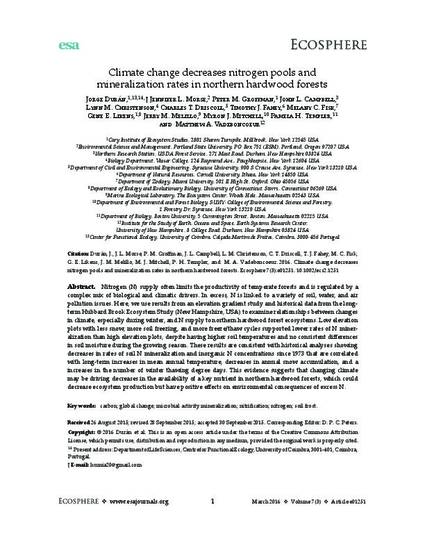
- Mineralization (Geology),
- Nitrogen in soils,
- Hardwood forests,
- Soil microbiology,
- Northeastern States
Nitrogen (N) supply often limits the productivity of temperate forests and is regulated by a complex mix of biological and climatic drivers. In excess, N is linked to a variety of soil, water, and air pollution issues. Here, we use results from an elevation gradient study and historical data from the long-term Hubbard Brook Ecosystem Study (New Hampshire, USA) to examine relationships between changes in climate, especially during winter, and N supply to northern hardwood forest ecosystems. Low elevation plots with less snow, more soil freezing, and more freeze/thaw cycles supported lower rates of N mineralization than high elevation plots, despite having higher soil temperatures and no consistent differences in soil moisture during the growing season. These results are consistent with historical analyses showing decreases in rates of soil N mineralization and inorganic N concentrations since 1973 that are correlated with long-term increases in mean annual temperature, decreases in annual snow accumulation, and a increases in the number of winter thawing degree days. This evidence suggests that changing climate may be driving decreases in the availability of a key nutrient in northern hardwood forests, which could decrease ecosystem production but have positive effects on environmental consequences of excess N.
© 2016 Durán et al.
This is an open access article under the terms of the Creative Commons Attribution License, which permits use, distribution and reproduction in any medium, provided the original work is properly cited.
